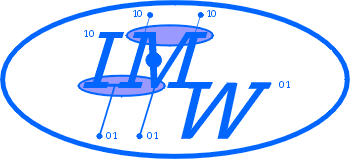INSTITUTE OF MATHEMATICAL ECONOMICS


Wulf Albers
Abstract
In Part III we related the theory of prominence to the WEBER-FECHNER law of psychophysics, which describes the reaction of men to physical stimuli as brightness, loudness, weight, etc. by three rules. The identical three rules can be used to characterize the perception of the size of numbers. However there is a fundamental difference between the approaches: While for physical stimuli the smallest perceived value only depends on variable and person, but is independent from the task, the numerical stimuli are perceived such that the smallest perceived value depends on the task. While in the WEBER-FECHNER approach the smallest perceived absolute amount is not an essential part of the theory, the smallest absolute amount becomes very important for the perception of numerical stimuli, especially, when payoffs are compared, with a £ 0 £ b. A central consequence of this observation is, that perception cannot be modelled by a universal function. Insufficiencies of the p-function of KAHNEMAN-TVERSKY seem to be based on this fact. - The power of the new theory to explain experimental results could be shown in Part III, where the modification of three traditional fairness criteria concerning different bargaining problems according to the perception function of the theory of prominence are given. The transformation simplifies the structure of the criteria, and gives the respective 'best' presently available models to explain the experimental data. - In this paper we describe additional experiments which support the theory of prominence, namely an experiment on group decisions on a joint numerical response, and experiments concerning the evaluation of 50%-50%-prospects. Main point of the latter experiments is that they leed to paradoxa which contradict traditional concepts, as for instance the prospect theory of KAHNEMAN-TVERSKY. The theory of prominence permits to explain the phenomena. Moreover, it could be used to predict a new type of preference reversal for prospects with 50%-50% probabilities, which thereafter could be verified in experiments. The basically same kind of phenomenon causes the paradox of iterated halving. - The fundamental kee to understand the paradoxa is the insight that the finest perceived full step of money is task dependent, and is influenced by the set of all prospects that are included in a (single) task. The effect is that the same prospect can be evaluated with different finest perceived full steps of money (and thereby with different evaluation functions), if it is evaluated as a simple prospect, or compared with another prospect.

| walbers@wiwi.uni-bielefeld.de | ||||
| List of IMW Working Papers | Members of the IMW | |||
|
Last Update: Monday, 23-Nov-98 13:44:55 MET©
Michael Borgelt Sending to: 134.76.163.122, Index:1 |